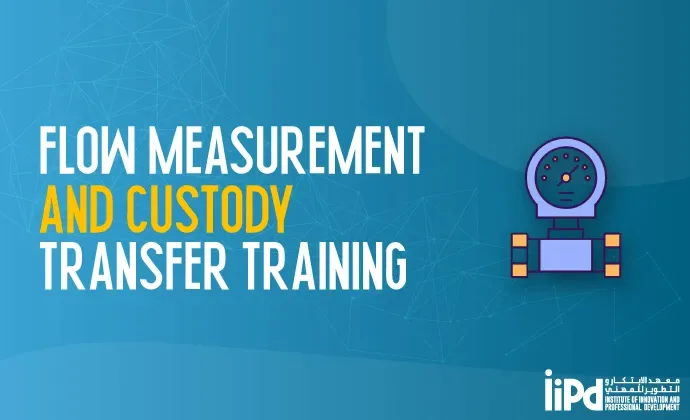
Course Details
Flow is the most commonly measured variable in processes, whether the process is continuous, or batch in nature. Many processes are controlled by varying the flow, be it reflux to a pipe or fractionator column, heating medium to a reboiler, fuel to a fired heater, or the discharge rate from a separator. Accurate measurement and control of flow is also critical from an economic point of view, since practically any fluid that flows through a plant has a price tag attached to it. Control of flow is generally quite straightforward and easily accomplished; usually, the difficulty lies in selecting the proper measurement device.
In this highly intensive training course, participants will gain a sound understanding and extend their knowledge of Flow Measurement and Custody Transfer systems, principles and types, and how to assess their impact on the strategic and tactical aspirations of the company. In general, flow measurements can be grouped into four categories: Basic measurement for process monitoring and regulatory control, Unit material balances; Accounting information for custody transfer (product sales); and Information required by regulatory bodies for permitting.
The key features of the training course are:
- The laws governing fluids and gases
- Flow Measurement
- Calibration and Proving
- LACT Unit
- Flow Computer
- API MPMS
- Main types and applications of Flow meters with emphasis on custody transfer
- Custody transfer principles and applications
Learning Objectives
By attending this training course, participants will be able to:
- Understand the Legal and Commercial Metering Requirements
- Appreciate design criteria and the importance of accuracy
- Understand measurement concepts and types of error
- Understand the basic concepts, principle of operation, and equipment used for Gas metering, liquid metering, proving and sampling
- Learn about LACT unit, flow computer, API, and MPMS
- Understand the typical operations, control functions and record-keeping requirements
- Evaluate the results of Turbine Meter Calibration and determine the validity by use of a Control Chart
Target Audience
This training course will greatly benefit all individuals who wish to improve their Flow Measurement & Custody Transfer knowledge and experience, especially:
- Engineers and Technicians of all Disciplines
- Instrumentation Personnel
- Procurement and Quality Control Personnel
- Inspection and Maintenance Engineers
- Operations Operators, Supervisors and Engineers
- Metering Specialists/Technicians
Training Methodology
The training course will be presented in a fast-paced and highly dynamic style. The training methodology includes theoretical lectures, concepts and role play, work presentation and techniques, case studies and exercises, and general discussions with relevant videos.
Course Outline
Day 1
- Flow Measurement
- Fundamentals of flow measurement (Static and Dynamic measurement)
- Coriolis flow meter, theory of operation, and troubleshooting
Day 2
- Calibration and Proving
- Proving and Calibration Principle
- Flowmeter and secondary measurement proving
- Meter prover and performance issues
- Calibration of meter provers
- Calibration Report calculations (Meter factor, repeatability uncertainty)
Day 3
- LACT Unit
- Overview of LACT/ACT installations
- Metering System Component overview and functionality
- Valves in Liquid metering system
- Temperature and Pressure instrumentation in the metering system
- Automatic Sampling System
Day 4
- Flow Computer
- Stream Flow computer (Introduction, Webserver, PC Setup, Display editor, Report Editor)
- Supervisory Computer
Day 5
- API MPMS
- API MPMS Ch11.1 (Volume correction factors)
- API MPMS Ch12 Calculation of Petroleum Quantities
This course provides a solid foundation in flow measurement and custody transfer, equipping participants with both the technical know-how and practical skills to select, calibrate, and manage flow systems with accuracy and confidence. From understanding core principles to working with LACT units, flow computers, and API standards, participants leave with the tools needed to ensure compliance, improve efficiency, and make informed decisions in flow-critical operations.








